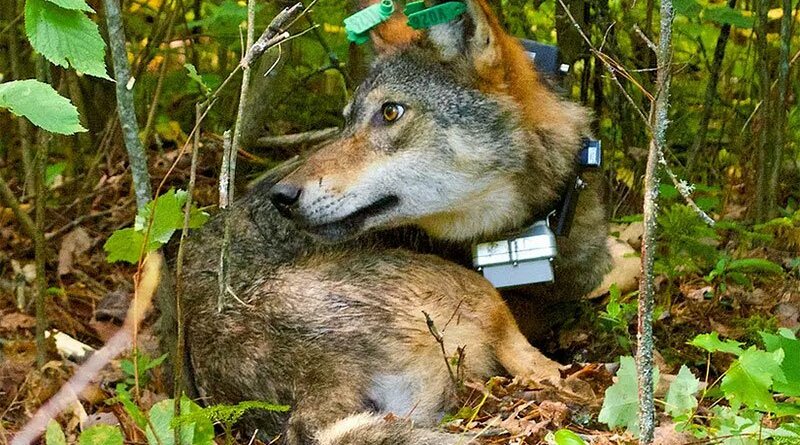What Does a Wild Wolf Do All Day?
If a wolf runs through the forest but no one hears him, does he make a sound? Well, yes, he does. Thanks to technology and a clever little collar cam, we can now hear and see what a wild northwestern Minnesota wolf does with his day.
A researcher with the Voyageurs Wolf Project attached the collar-mounted device while the wolf was sedated.* Thereafter, it recorded 30 seconds of video at the beginning of every daylight hour. This gave the scientists a brief—and, thanks to the wolf’s abundant mane, fur-framed —window into his life. The footage is thought to be the first of its kind. The lone wolf (#V089) displays a knack for fishing. According to VWP, “He can be seen eating three different fish, which were all killed and consumed at the same spot along the Ash River.”
In an earlier article, 10 Things I Wish I’d Known About Dogs, we included a video from the same group (see item #5). This one also documented something researchers suspected: During the mid- to late-summer months, wolves in northeastern Minnesota frequently chow down on wild blueberries and raspberries. An analysis of their diet during those months showed that these berries made up between 56 to 83 percent of their intake. According to the group, “This doesn’t mean that wolves prefer berries over their typical prey. But rather that in July and August, wolves’ typical prey (deer fawns and beavers) are harder to catch, and so wolves turn to a food source that is abundant and requires little energy expenditure.”
The more we learn about wolves, the more important it is that we protect them. And yes, they need protection. Why? Here’s a recent example: On April 21, 2021, the Idaho senate approved a bill that, if also approved by the House chamber, will allow the state to hire private contractors to kill up to 90 percent of the state’s wolves. Limits would be removed on how many wolves hunters can kill, and hunting from motorized vehicles and the use of night-vision equipment would be allowed. Senator Mark Harris (R-District 32), one of the bill’s sponsors, had this to say: “We’re supposed to have 15 packs, 150 wolves. We’re up to 1,553, something like that. They’re destroying ranchers. They’re destroying wildlife.”
GET THE BARK NEWSLETTER IN YOUR INBOX!
Sign up and get the answers to your questions.
We suspect that scientists who study wolves would beg to differ.
According to Project Coyote, “wolves cause less than 1% of cattle deaths and any depredation can be properly managed without this bill; killing wolves at this rate will only support decisions to relist them with Endangered Species Act protections. The majority of Idahoans and Americans support wolf recovery at levels where wolves can fulfill their ecological functions. Almost no one supports wasting tax dollars to recover wolves, just to exterminate them again.” For more details, see this article in the New York Times.
*The collars, which have been designed for wildlife studies, include a feature that allows them to automatically drop off the animal at a preset time; researchers can then safely retrieve the collar.




